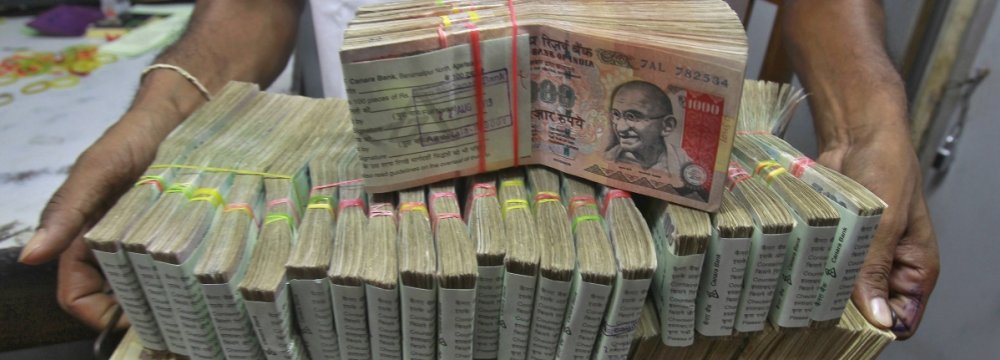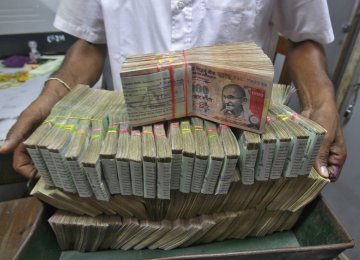The recently announced demonetization move by the Prime Minister of India, Narendra Modi, in order to curb the menace of black money is expected to have a detrimental effect on the country’s gross domestic product in the fiscal year 2017, owing to reduced consumption amid an environment of liquidity crunch.
The demonetization will likely shave 0.40ppt from India’s GDP growth in FY2017 mainly due to reduced consumption amid a cash crunch. However, over the long term, the move will have far-reaching positive implications, news outlets reported.
According to the World Bank, India’s shadow economy accounted for 23% of GDP in 2007. Using this ratio as the benchmark, the value of unaccounted money would amount to nearly $450 billion. While not all of it will be ploughed back into the formal economy, it will still be significant to help bridge the government’s projected $1-1.5 trillion spending on infrastructure.
Further, old currency notes that do not get exchanged, due to factors like tax liability or fears over black money revelation, will ultimately be invaluable, costing the economy a net loss of rupees five trillion; however, this will likely reduce the Reserve Bank of India’s liabilities, allowing for a special dividend payment to the government.
Furthermore, over the medium term, the demonetization will also discourage cash hoarding, leading to higher tax compliance and a widening of the tax base.
“Overall, India’s demonetization has significant potential to lift its potential growth through a more transparent economy,” Australia & New Zealand Bank commented in its report.
Fair or Unfair?
The microeconomic effects here seem to be beneficial. There have long been concerns about terror financing through forged notes for example. There’s quite obviously substantial tax revenue going uncollected. And perhaps the biggest effect is that large portions of the population feel that the basic system is unfair. They’re locked out of that easier world where matters are settled in large amounts of cash, where tax is not paid and where favors are bought.
Ambit Capital, a Mumbai-based equity research firm, has officially estimated that the demonetization-driven cash crunch will result in GDP growth crashing by 0.5% in the second half of financial year 2016-17.
Further, Ambit Capital estimates that during the October to December quarter, the GDP growth may contract, thus showing negative growth. However, Ambit is hopeful that a strong formalization of the informal economy will ensue through 2017 until 2019 and this disruption could also crimp GDP growth in 2017-18 to 5.8% from their earlier estimate of 7.3%.
The disruption to the economy will be such that there will be, possibly, not just no growth in this last quarter of the year but actually a shrinking of the economy.
“We expect this dynamic to crimp GDP growth in India in FY18 as well and hence we have cut our FY18 GDP growth estimate to 5.8% YoY (from 7.3%),” Ambit economists said in a note.
Effect on Production
A report by Care Ratings titled ‘Impact of Demonetization on GDP Growth in FY17’ said, the services sector is expected to be affected the most.
“Importantly, these losses, due to their inherent nature, can’t be recovered in the next quarter. For rest of manufacturing, demand side issues would exist till such times that conditions stabilize and could get reversed in Q4. Hence, Industry is also expected to be impacted which will be more significant in the first 2-3 weeks post the announcement.”
While consumer goods’ companies are also feeling the impact right now, with tight liquidity in the markets, the demand is likely to come back by next quarter. Losses incurred would be recovered in the next quarter, particularly for consumer goods where there would be only deferment of purchase.
Even the SMEs in industry will have a major problem in adjusting production schedules as both payments and receipts flow in cash given their structures.
According to the Care Ratings’ report, as per initial estimate, overall GDP growth would be affected by 0.3-0.5%.






Comments
vanisha nagar (not verified) - Permalink
Add new comment
Read our comment policy before posting your viewpoints